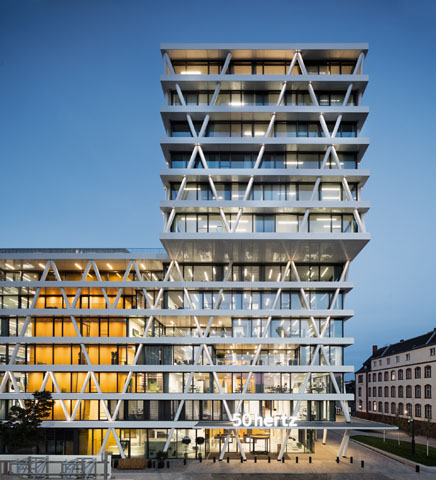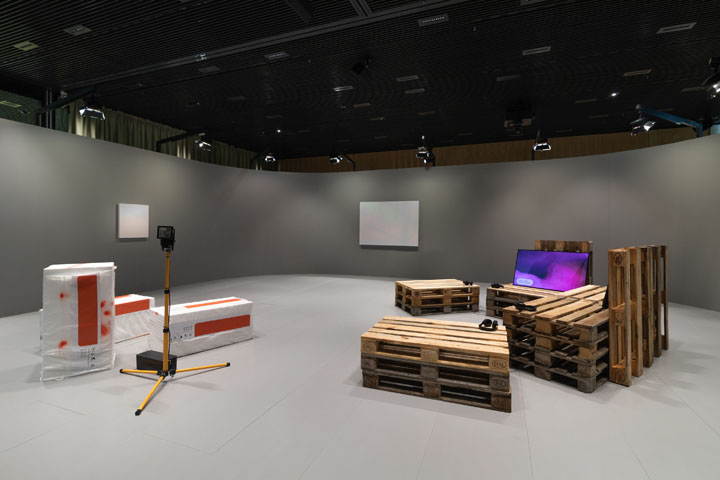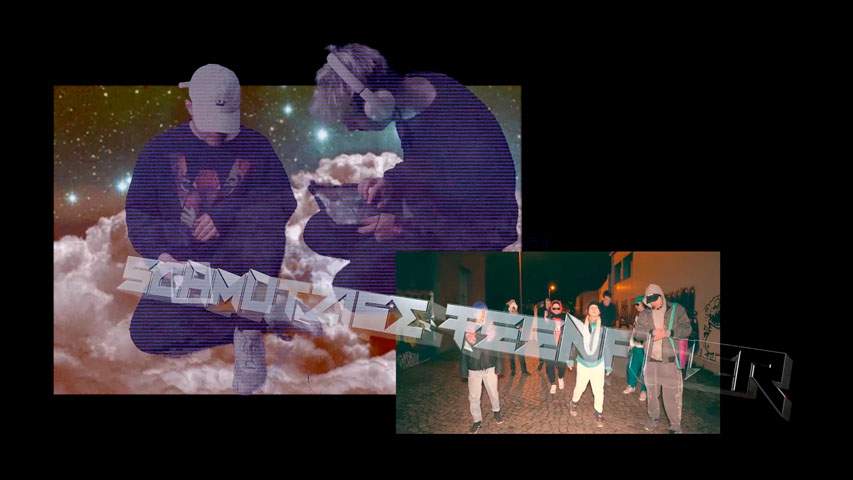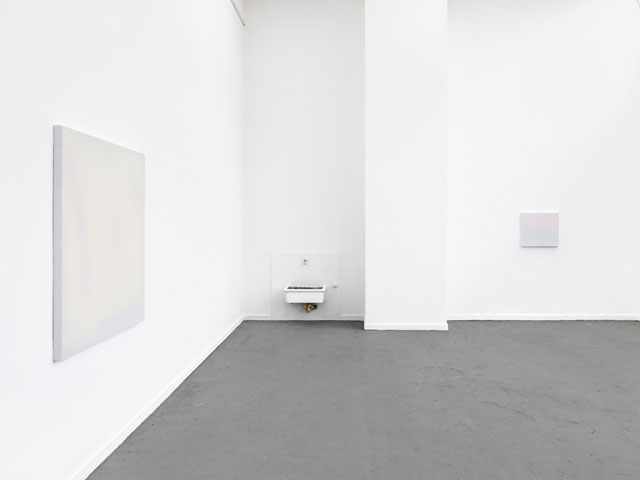Short Circuit to Success? 50 Hertz Rundgang 2019, Brought to You by Nationalgalerie
- Christian Hain
- Jun 20, 2019
- 7 min read
Updated: Mar 23, 2020
(Berlin.) I've hesitated, I really did: Is it ok to roast a young artist for his first show, or to be precise: three young artists for their first show in a (somewhat) larger setting? And needs not the initiative itself to be applauded, the initiative of a state-owned energy supplier hosting contemporary art exhibitions (one per year) in its corporate headquarters? Then again, now they’ve hatched, and left art school - they are graduated by now or at least should be because this is the whole concept of 50 Hertz Rundgang ("Circuit") exhibitions: To identify and honour some of the best of the best talents among German art schools’ grad classes, draft style – Have they not taken that one decisive step into the world? Not to forget, an artist expecting to have any career in art at all should have collected some more entries to his CV at this point already, which they certainly have - as said above, it's only the first show in a (supposedly) larger setting. There is also a jury involved, a jury composed not of electricians and (software) engineers but provided by the obscure and omnipresent body that is Berlin’s Nationalgalerie (National Gallery/ies). Thus, if things go awry, we should simply agree it’s all the jury’s fault. And finally, let’s not exaggerate: the Circuit is mostly an event for 50 Hertz employees, hardly an external visitor will find his way here on purpose (which still amounts to more viewers than this blog has readers).
Every artist on the circuit will still have time enough to reconsider his career choices, should the need arise. Non scholae, sed vitae... even art schools can prepare you for life out there, if only you do it right. Take Thomas Mader for example: He’s spent all the free time those studies provide to peruse financial statements, balance sheets, &ct., of hedge funds active in the European property industry, each and every document available in the Investor Relations sections of corporate websites, plus maybe even more - whoever knows which door will open to a young artist if he only asks politely?
Mader, however, did not put the amassed knowledge to good use by applying for a traineeship in one of those firms, a 90hours/300k-position at a business consultancy, or only to make his first millions on the side – well, he might have done that too, but first and foremost he did something else (or is it? art and investment have more in common than you suspect - that wizardry of numbers can become quite artistic, not to mention the strong/crook-y, creative, personality needed to succeed in either industry), namely a rather enigmatic installation.
Contemplating that artwork, we can be sure of only one thing, and only because this is art in Germany: Investments funds = bad, public housing schemes = good. Yet, how exactly Mader arrives at this presupposed conclusion, is not particularly obvious.
We merely find heaps of bags of polystyrene sheets or other insulating materials before the background of a fake, graffiti covered, noise barrier. The bags carry small but not really hidden inscriptions, in their straightforwardness probably fictional quotes to sum up business ethics and strategies: “Estimates of future population growth have been revised higher in light of the influx of people into the city. The group remains vigilant to threats to the business”, “The company expects a continued political assault on property owners. The trends we have highlighted in the past have intensified.” ‘kay.
It might come in useful to get familiar with the situation in Berlin where on the one hand we see a huge wasteland in the southern city centre, once the site of an airport, that could provide living space for tens of thousands of citizens as well as the grounds for a much needed new sports stadium, but cannot as, alas!, Berliners stage fierce protests against even the most careful projects to build anything here at all (except container villages for illegal immigrants). On the other hand, those same protestors lament a supposed housing crisis that expresses itself in rising rents (they are still ridiculously low in the eyes of everyone who has ever spent time in any other capital city of the developed world; but Berlin by far being the ugliest of those, there might be some logics involved after all). Meanwhile, common (non-)sense has identified the baddies as foreign investment funds, and moreover everyone who dares owning a property and rent it out (in case you were counting on stopping here for a couple of weeks or months: Airbnb has been all but outlawed). - Make no mistake, hedge fund managers are neither to pity nor to idolize, but the populist alternative of state owned beehives should send down shivers your spine no less.
Germany in general does not know any of the real estate billionaires and common slum lords most other parts of the civilised and free world are familiar with. But as regards Thomas Mader, he has thoroughly proven his motivation and capacity to invest himself in a project and dig deep for all sorts of data. He will only profit from this - keep up the good work, and Warren's waiting for you.
Only occasionally you’d wish for art schools to remind their students that taking an artwork as important as the theoretical foundations and meta-information accompanying it(s creation) could be a cool idea at least from time to time, too. You want to agitate against the property industry and, instead of writing a pamphlet, wrap your thesis in art to make it more appealing (and sell it better), just do it right. Daring assumption: Those who understand, and appreciate, installations like this, also read and understand manifestos relying on and quoting profound analysis. There’s no need for the artwork then. ... Which of course might count as the ultimate compliment for any artwork. Let’s change the topic.
“Get rich or die tryin’” - another artist on this year’s circuit could have a promising alternative career in view too, should it not work out with that art thing - although it's a little less profitable than investment banking and international realty. No matter what happens, Cora Czarnecki will always have a future in graphic design or the direction of music videos and TV commercials. At 50 Hertz, she portrays – or only so much as documents the (semi-)professional life of - a music collective going by the moniker Die Schmutzigen Teenager ("The Dirty Teenagers"). Of music videos, concert recordings from community youth centres and interview snippets alternating on a pair of screens - wait, of course: “a two channel video installation” - the most interesting part are internet memes and emoticons combined to form an image. All this is autobiographical, or a work of participant observation, the artist being a part of the collective herself. “Hey guys, now keep on with what you’re doing, and act as if I’m not there!”
Straight outta Leipzig, these Dirty Teenagers look suspiciously much like an 1980s rap group, a white, European (or Russian), upper middle class, '80s rap group. Why is it that those so often seem silly and awkward? “Dirty” and “Teenagers” also seems like a double lie, or a very conceptual name - more like the super neat students who when they were still teenagers a couple of years ago, always kept their rooms tidy and still go protesting against the weather report every Friday. Soon, they will start working, become teachers, journalists, and art directors, never were in a gang, never did any prison time, never participated in a drive-by shooting, have no street credibility whatsoever... (Hey, it’s not my stereotypes, it’s Hip Hop’s!) Instead: “Yeah, uh-um, neoliberalism....” What if mumble rappers do have the better lyrics after all?
There’s a touch of children’s birthday party to all of this, they seem so very nice guys*esses, particularly that one girl often taking the lead, like mum said: “Now you go and play ‘rapper’ in the backyard, and I’ll be back soon”.
All questions of attitude and style aside, they don’t have no flow, would a music critic still say, “sh—‘s not lit”? Whereas in theory it is a good idea to attack the commercialized music industry with its repetitive aesthetic patterns, and while art schools can produce classy pop acts (think ∆), your alternative should add something more than merely another (self-ironic or inadvertently funny) pose.
Cora Czarnicki though will make her way, directing commercials for energy suppliers perhaps. It could be worse: She could be a YouTuber, or “influencer”. Word.
The last artist in show – I’ve been to 50 Hertz Circuit’s first edition two years ago, and this time, it felt considerately smaller, are there fewer artists or only fewer works? – is the most interesting: Adrian Altintas shows very, very, very, no but: very, reduced paintings. On first sight, from a distance, completely, utterly, undistinguishable, monochrome canvases, white on white, then, on second sight, approaching a little closer, it’s still the same, blurry light reflexes at most, shadows falling from somewhere in the room. On - well: finally, you see, or merely guess the abstract paintings. Not that it would never have been made before, but it's still nicely done. There’s some blabla attached to it too, Altintas is taking mobile pics all over the city, collecting screenshots from the web, and projecting those to a surface, he’s using dedicated materials, &ct. Let’s appreciate an artist to whom matter both: research, concept, idea AND the final product (as much as it is distinguishable).
About a week later, I visited the show of three freshly graduated artists in a Berlin communal gallery, they’d been awarded a "Price of the President of the UDK" (Berlin’s most important art school). It was much better, but I had already started working on this, so be fine with it.
Circuit 50 Hertz, 5-30 June 2019
World of Arts Magazine - Contemporary Art Criticism










Comments